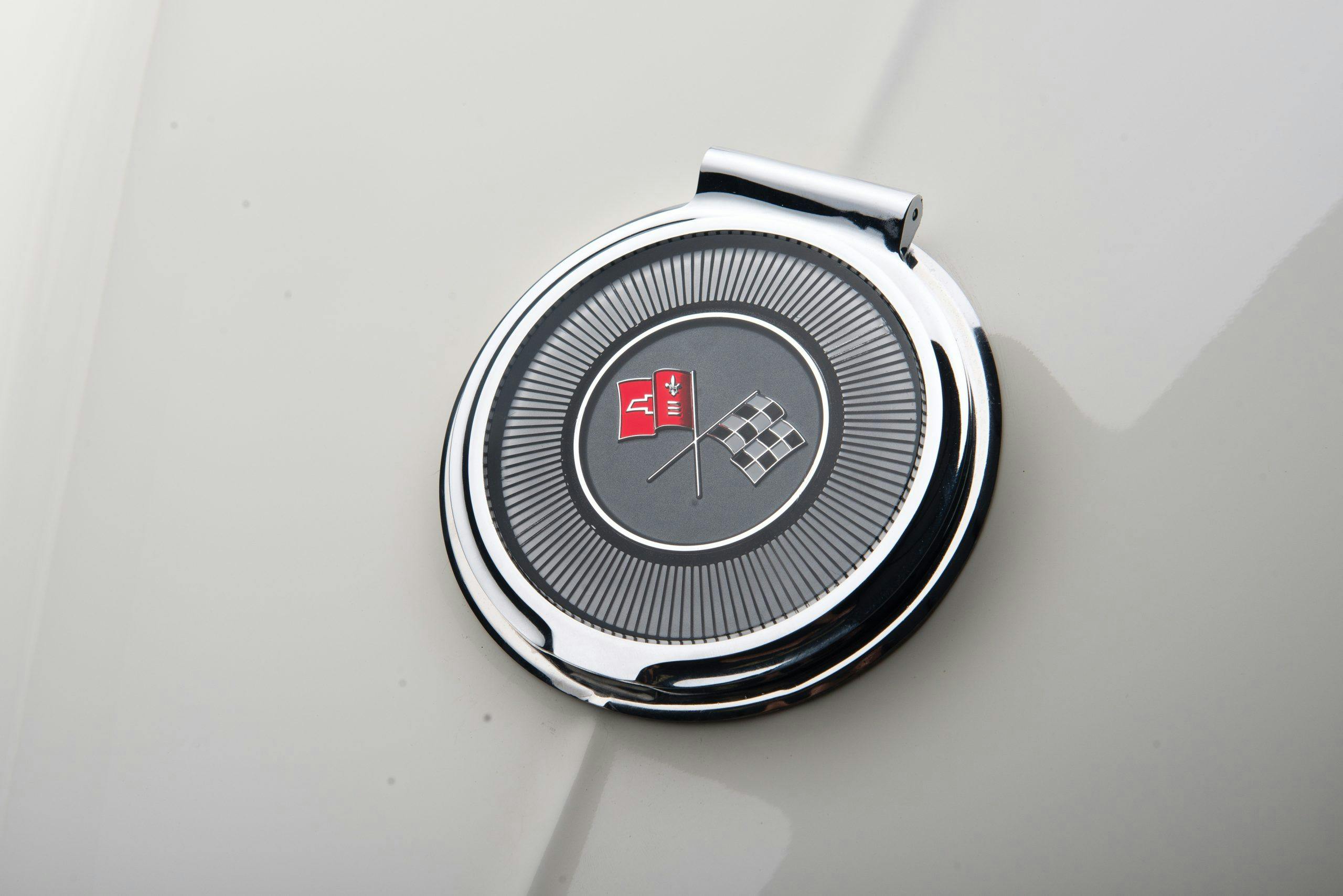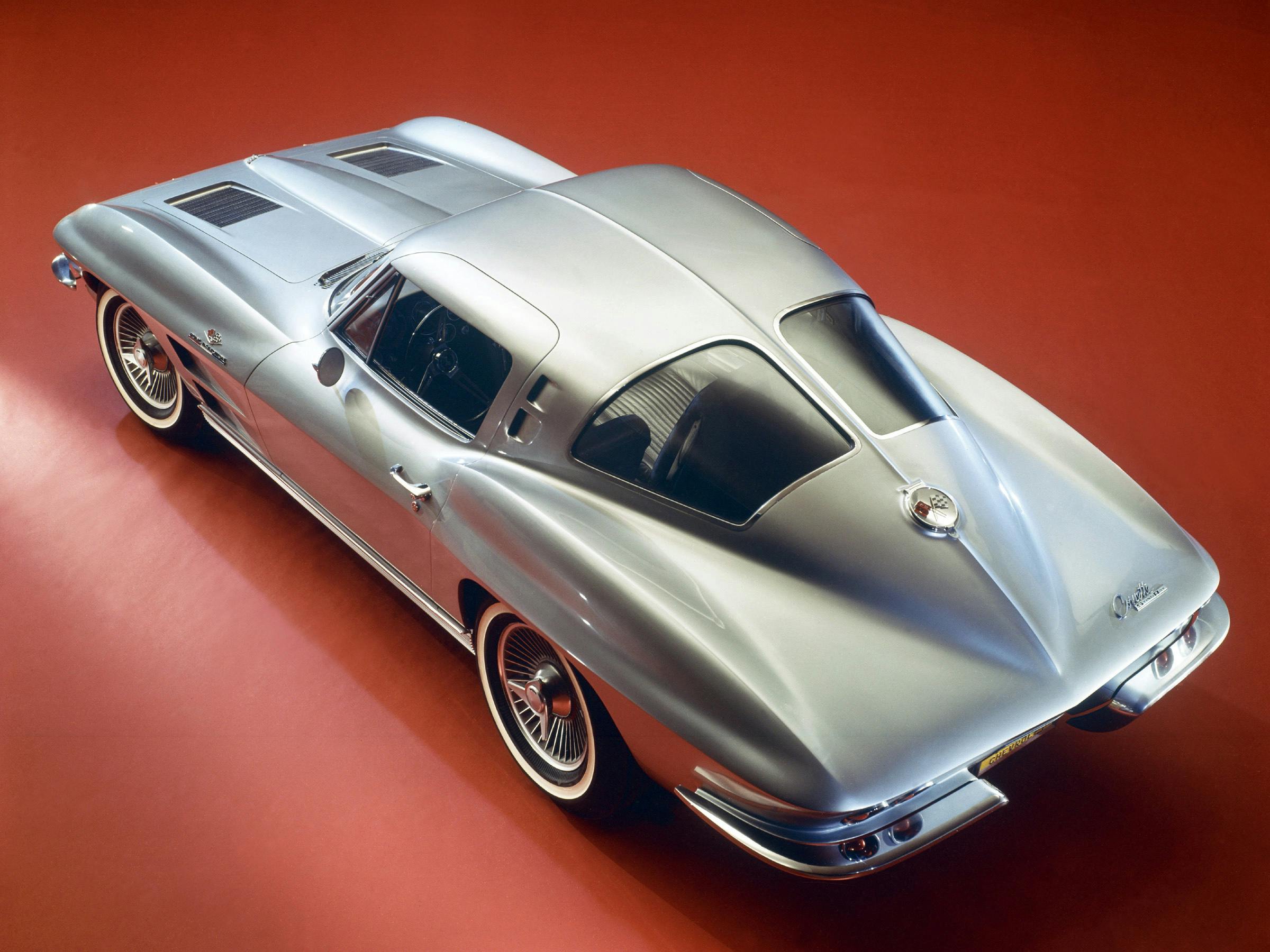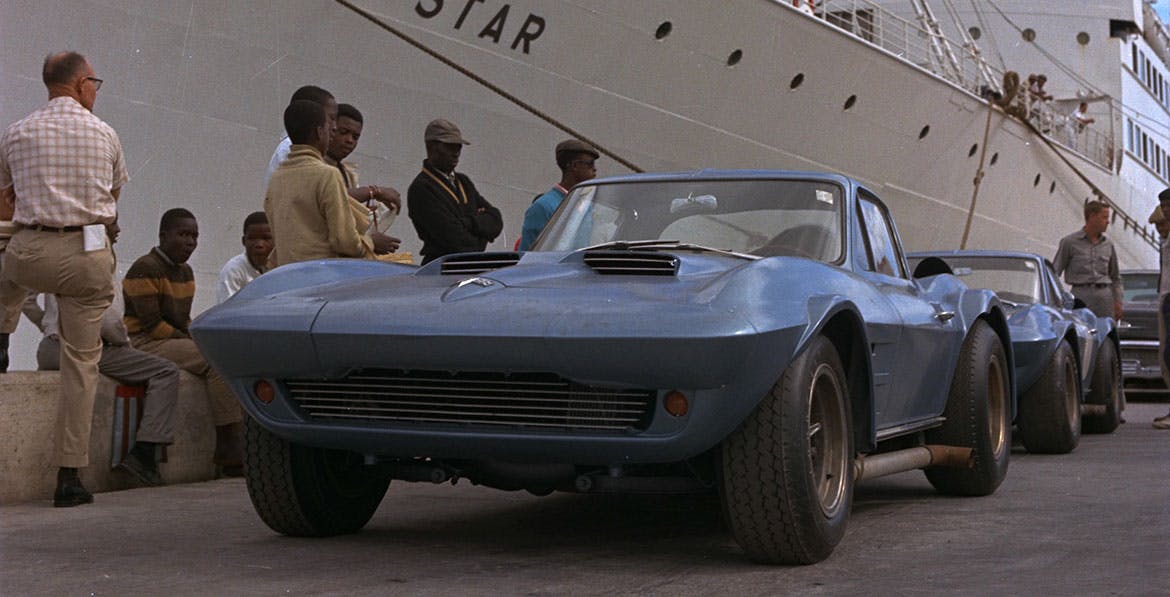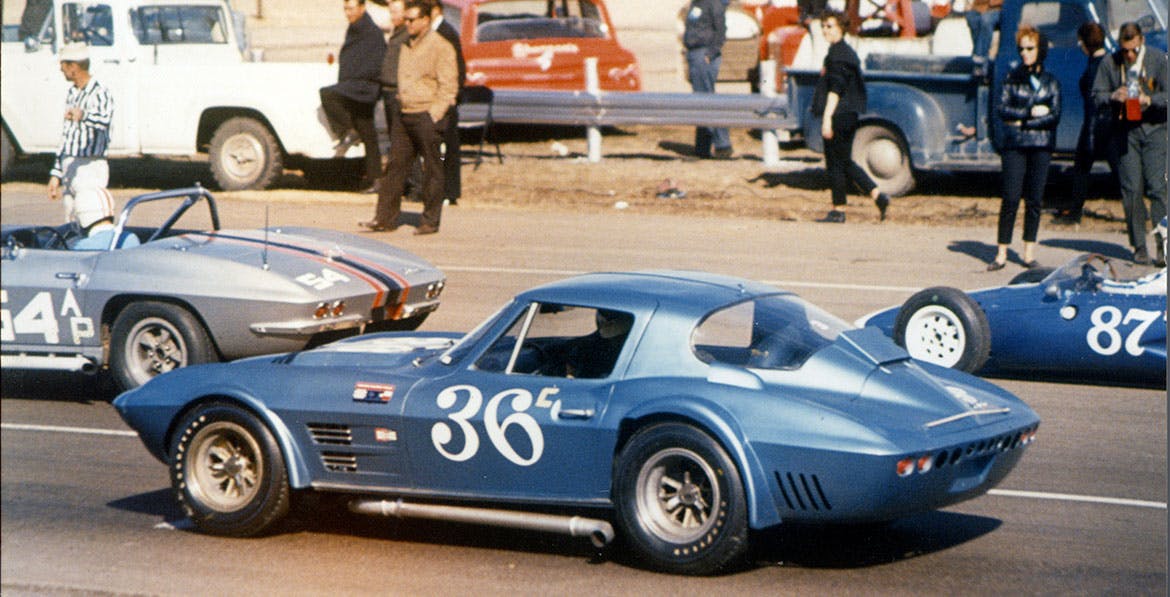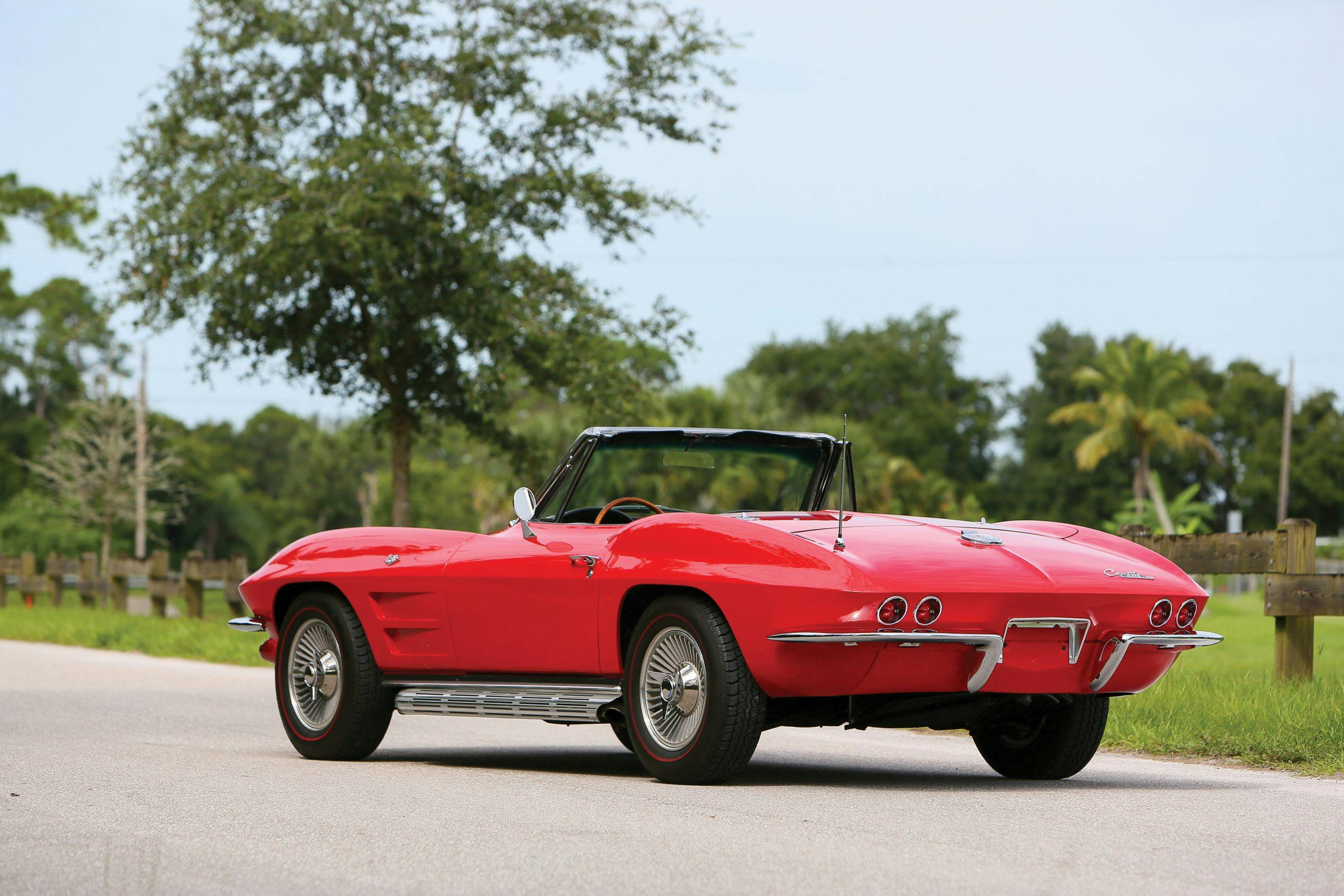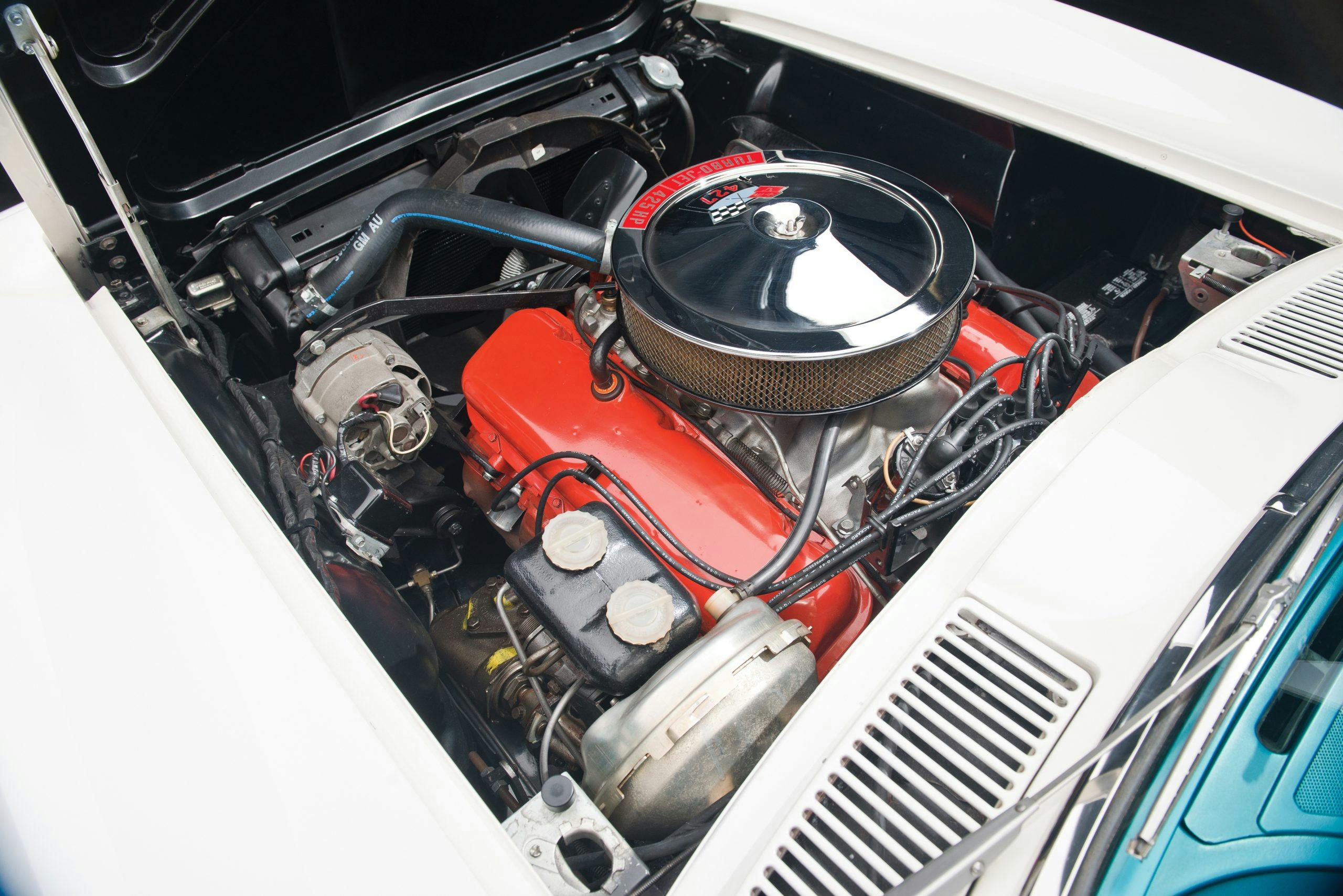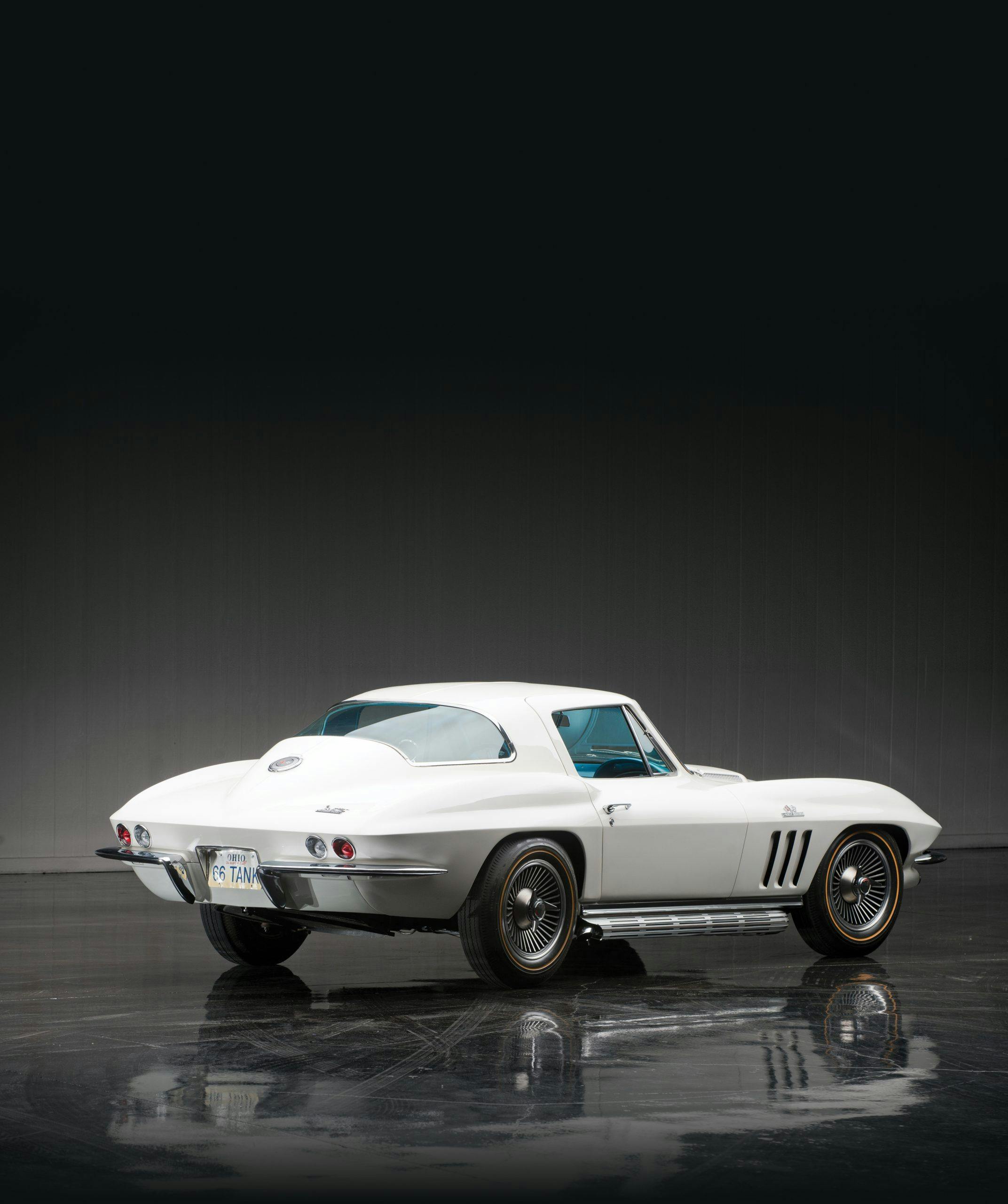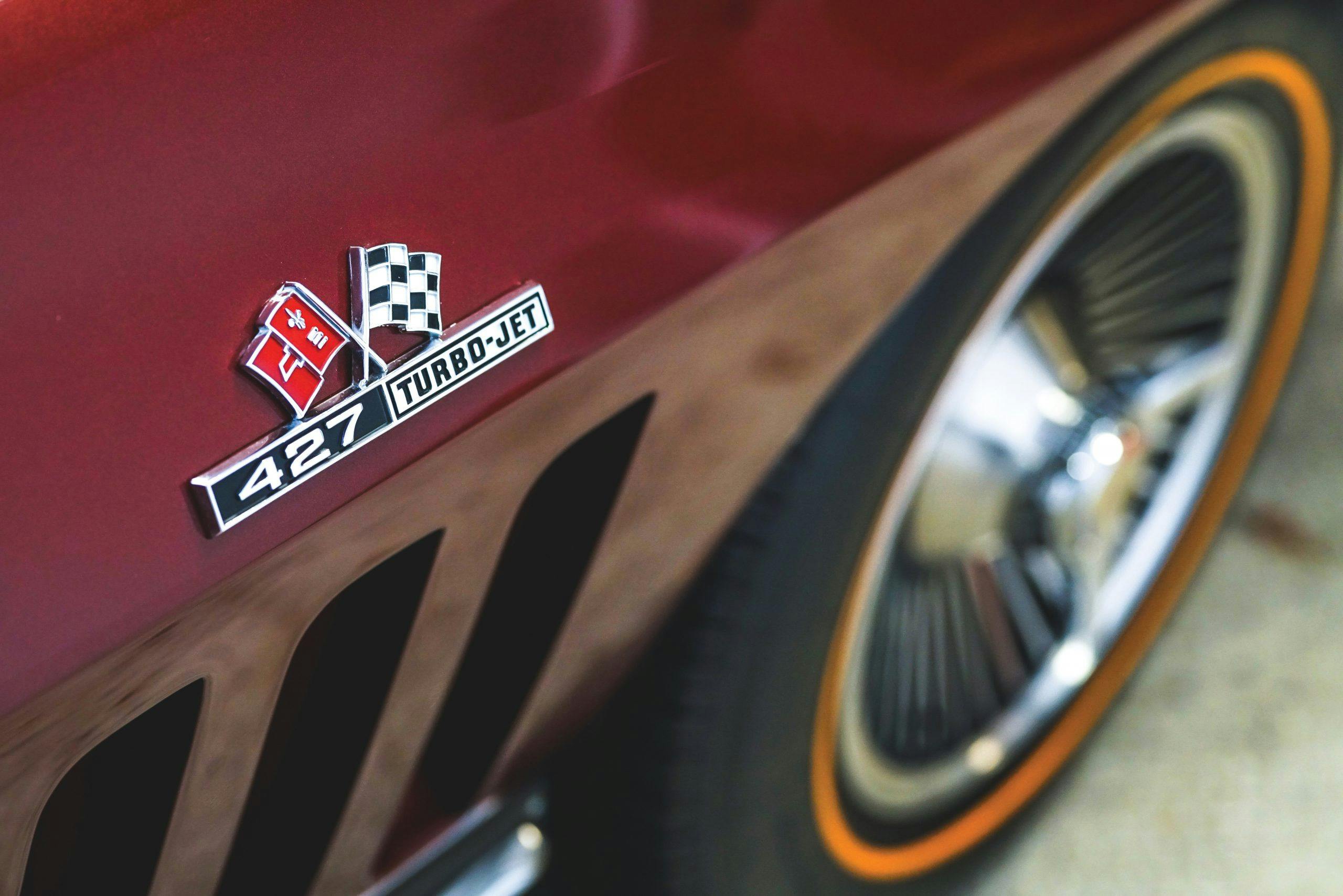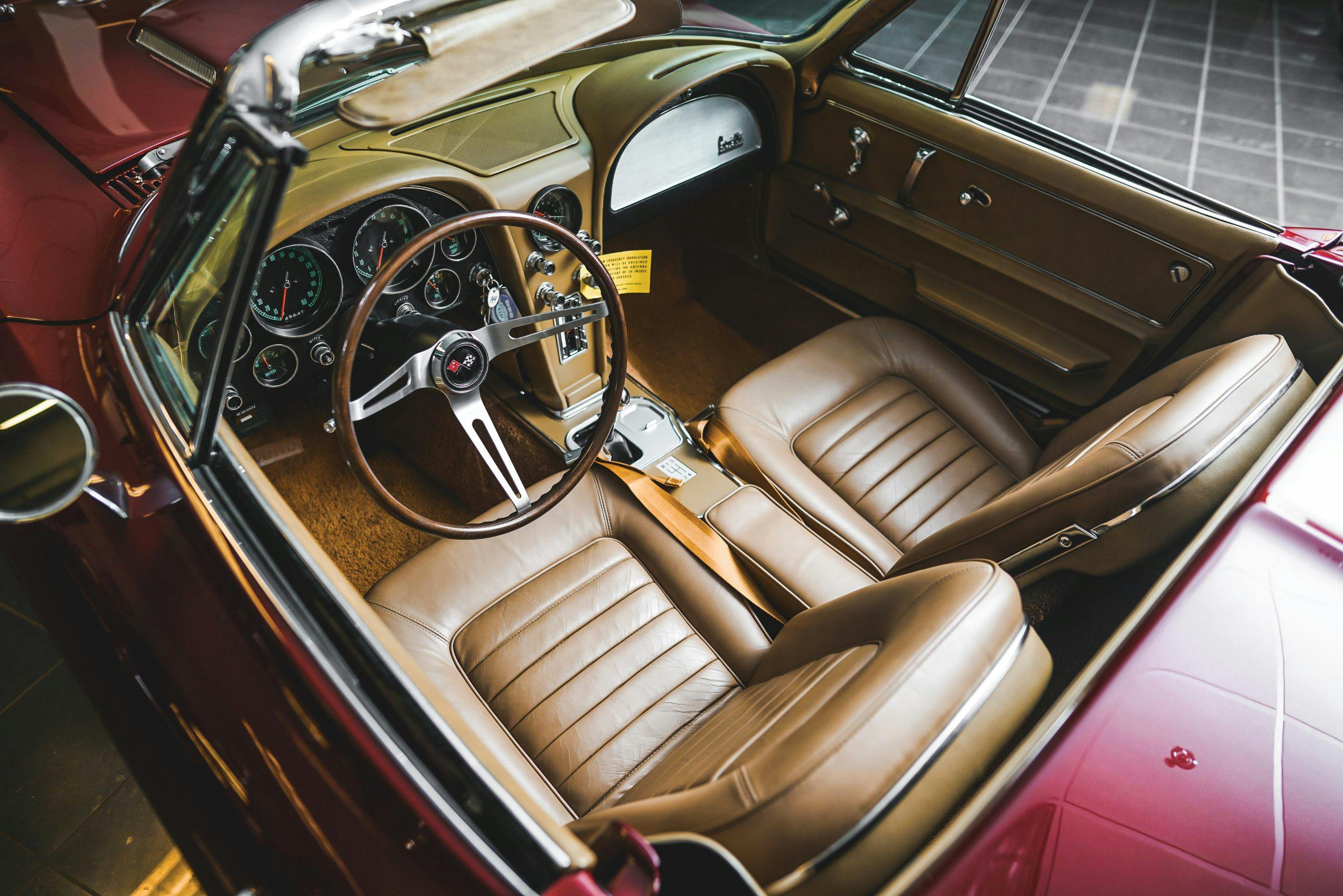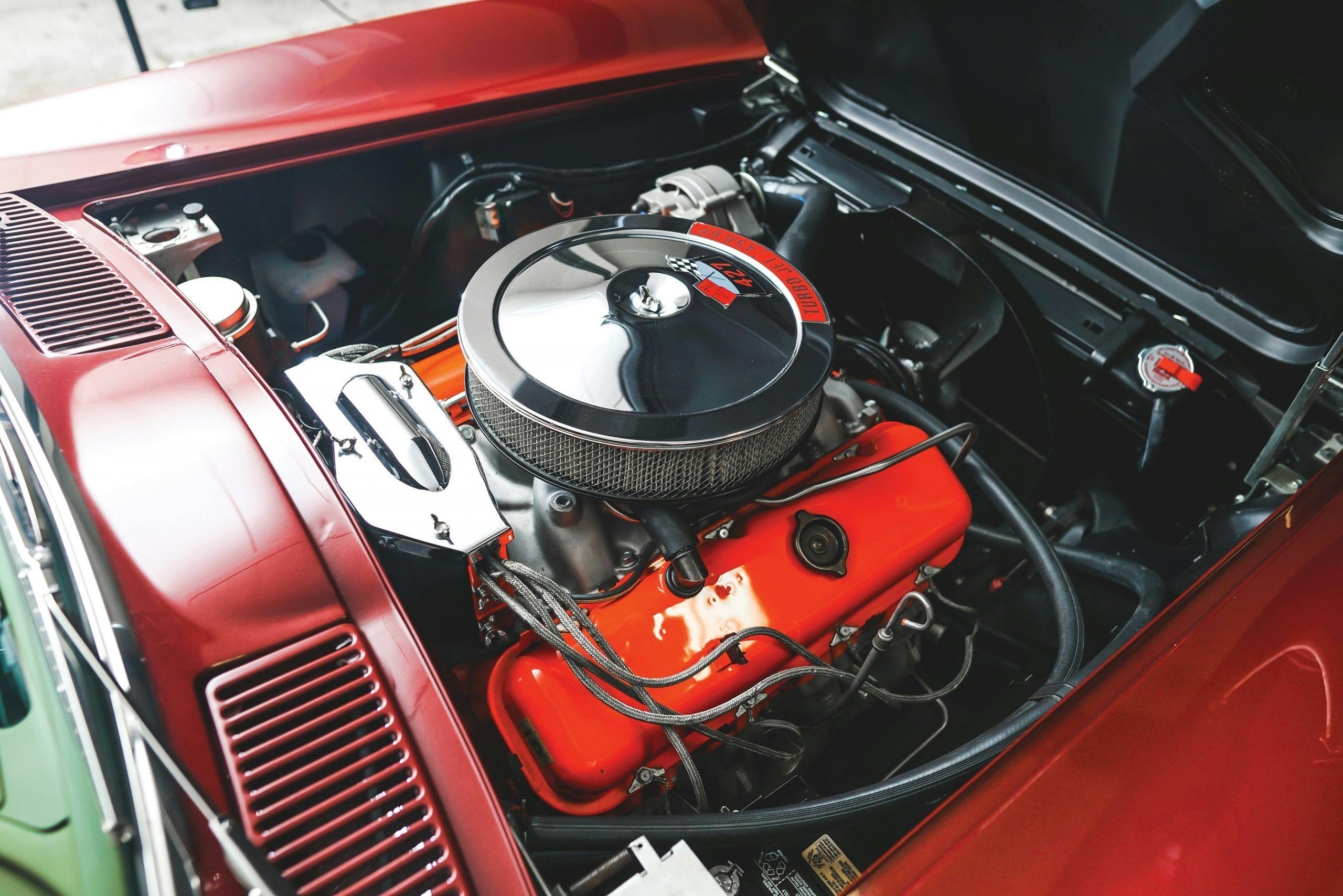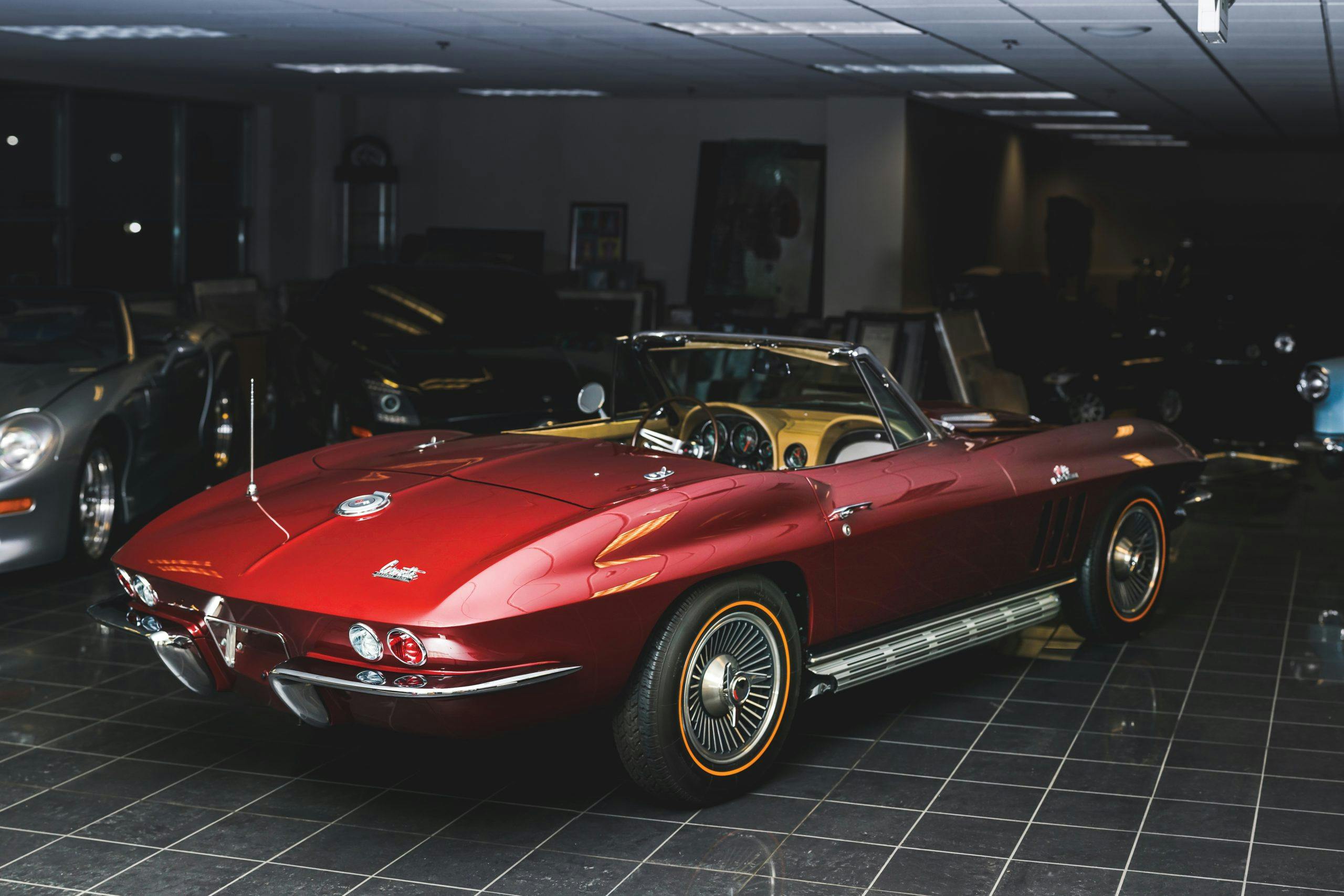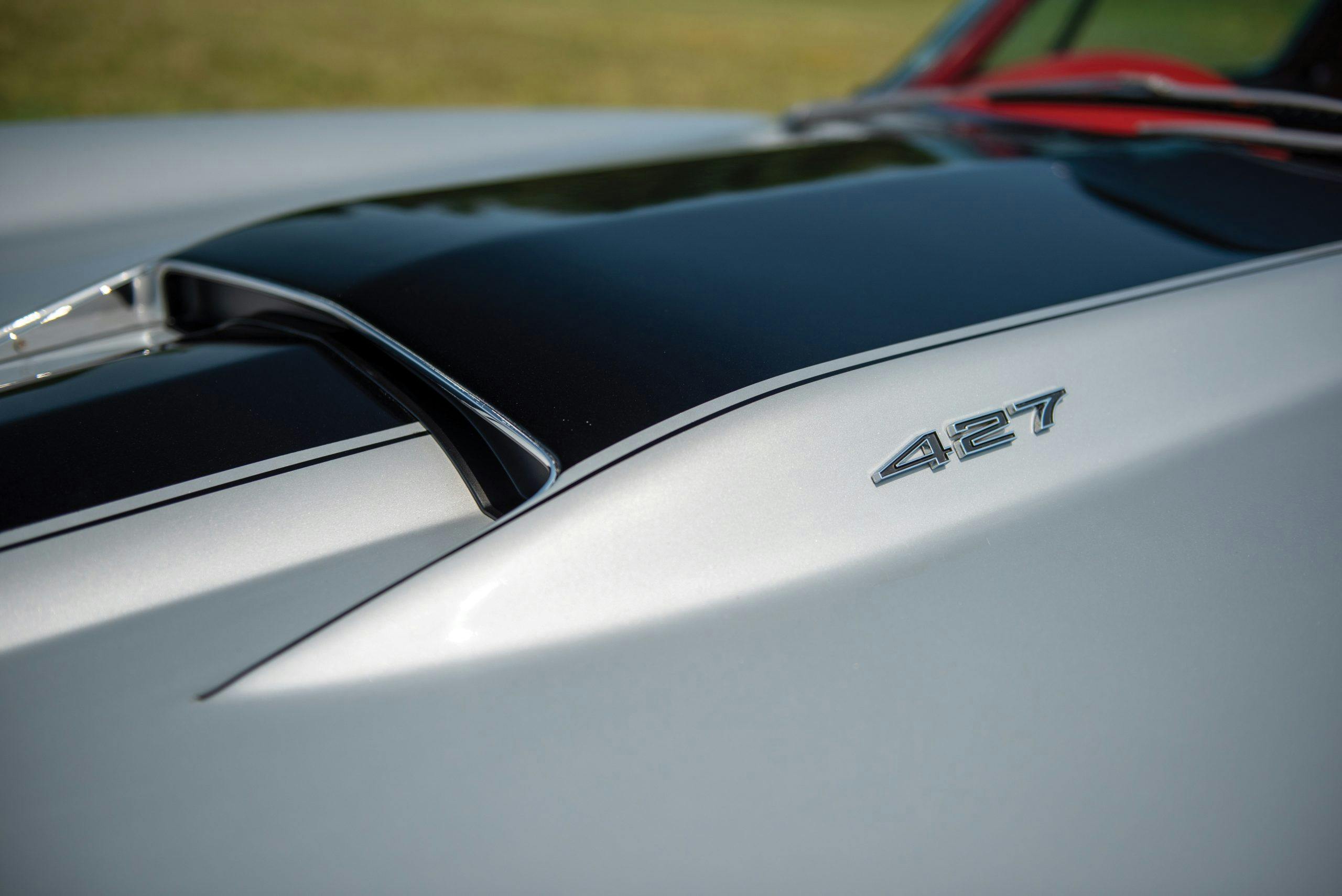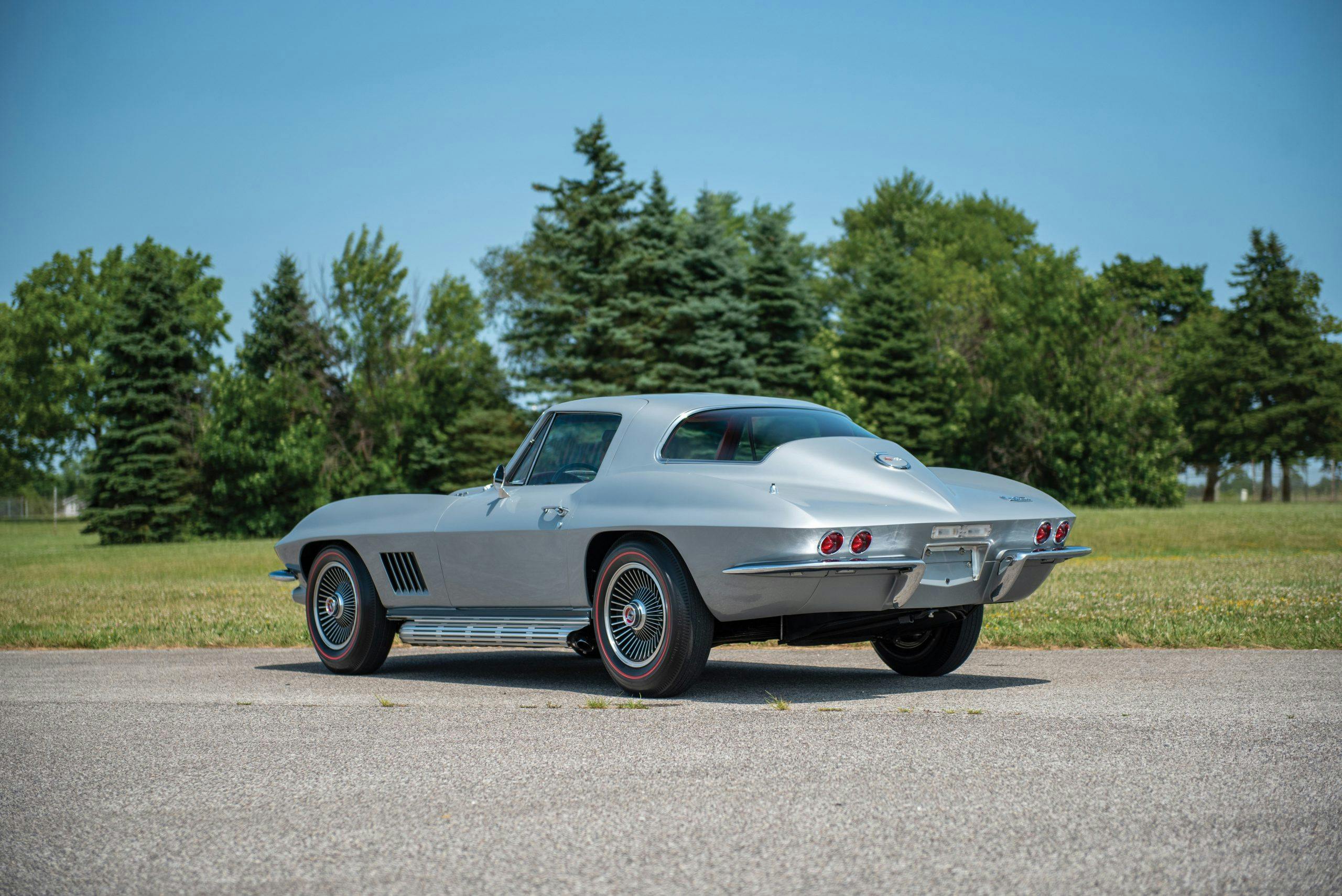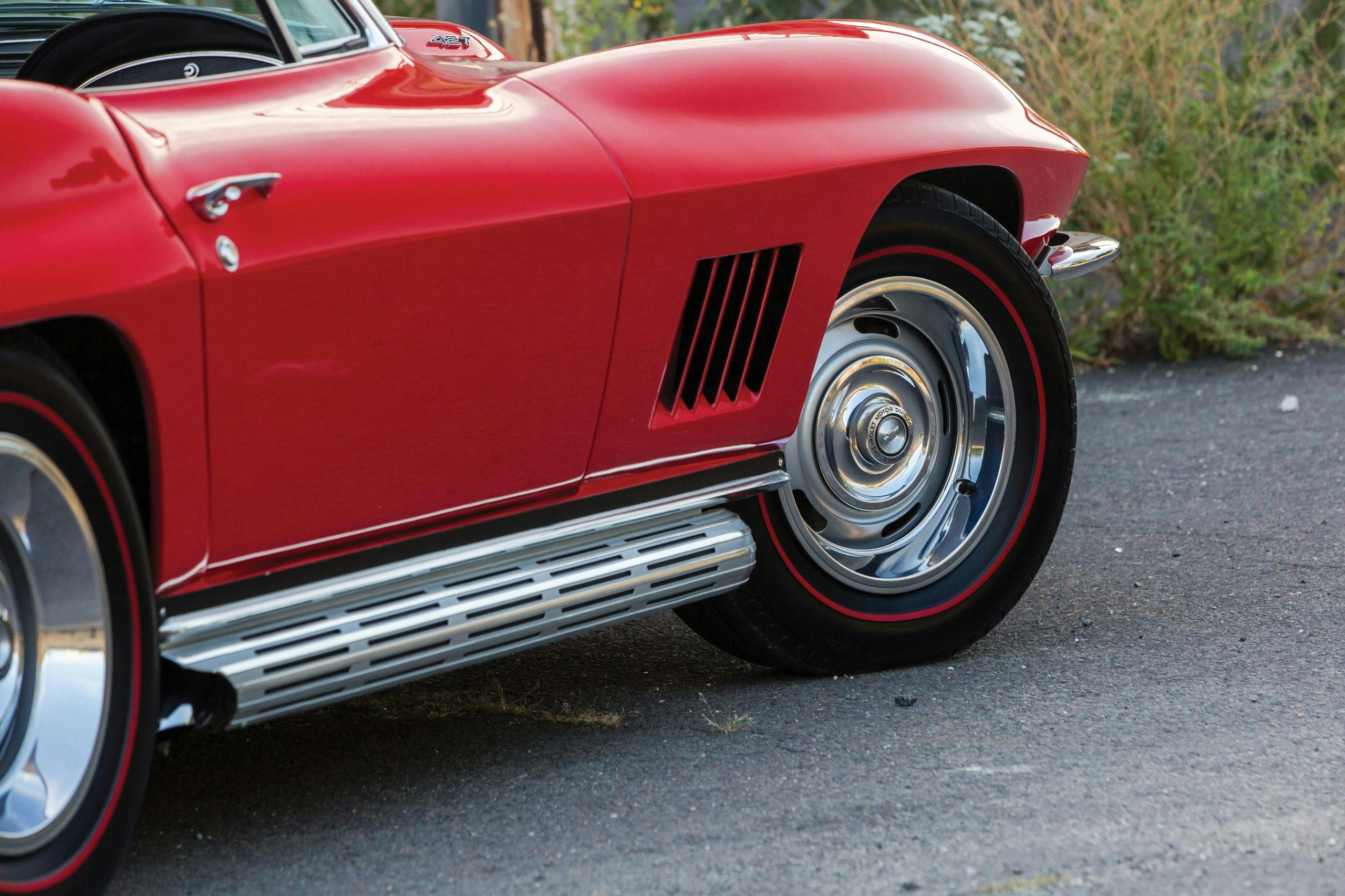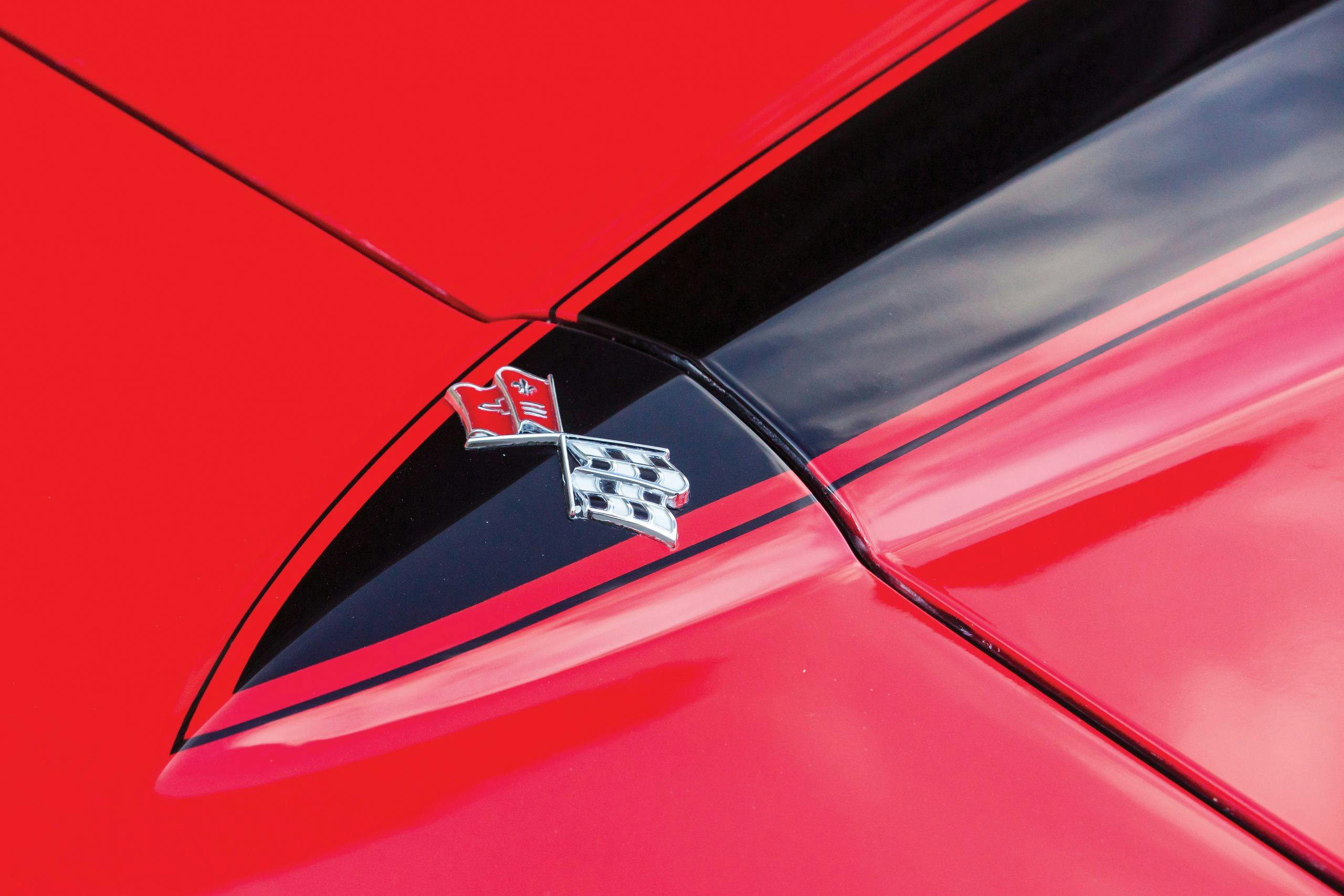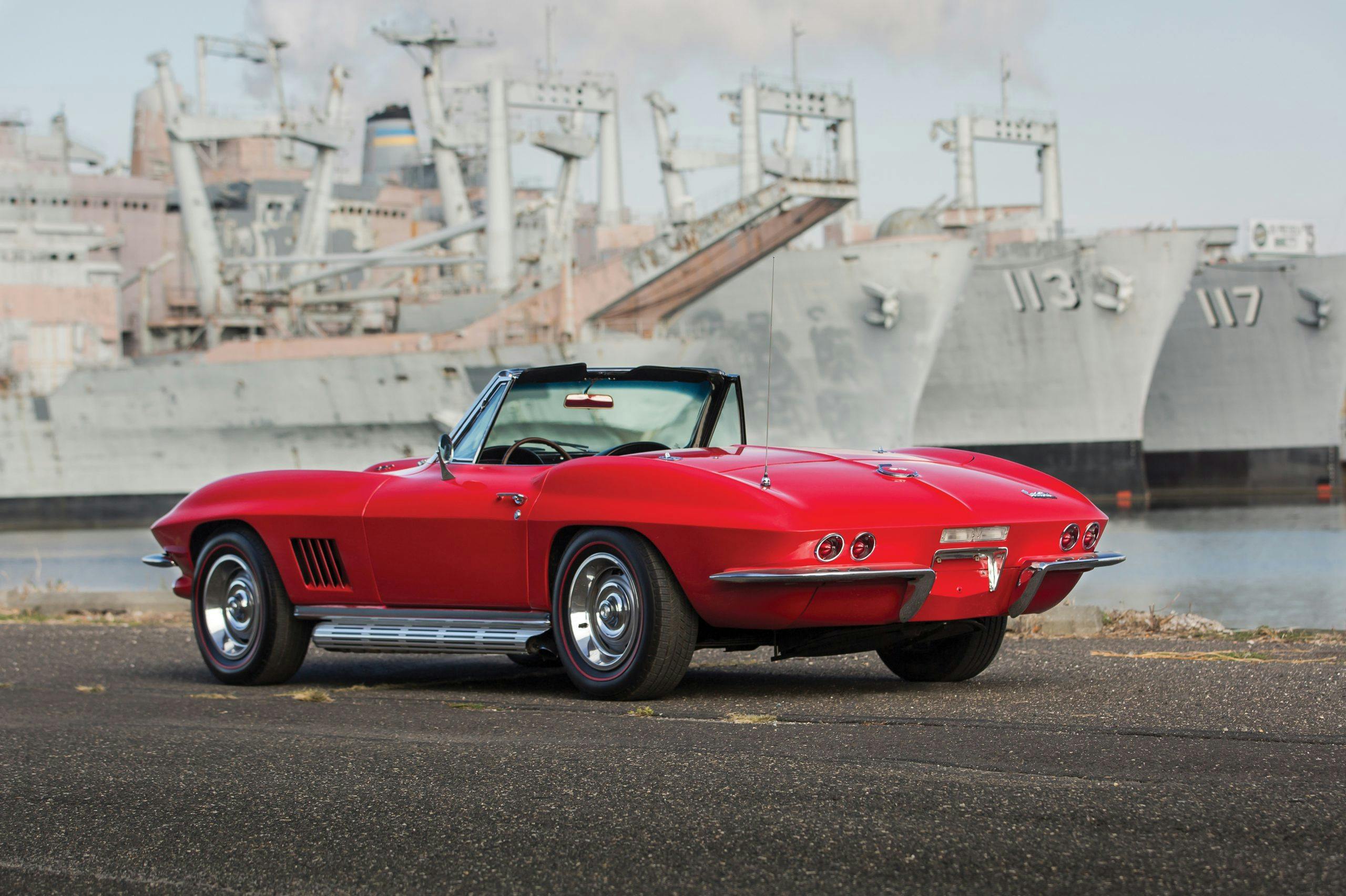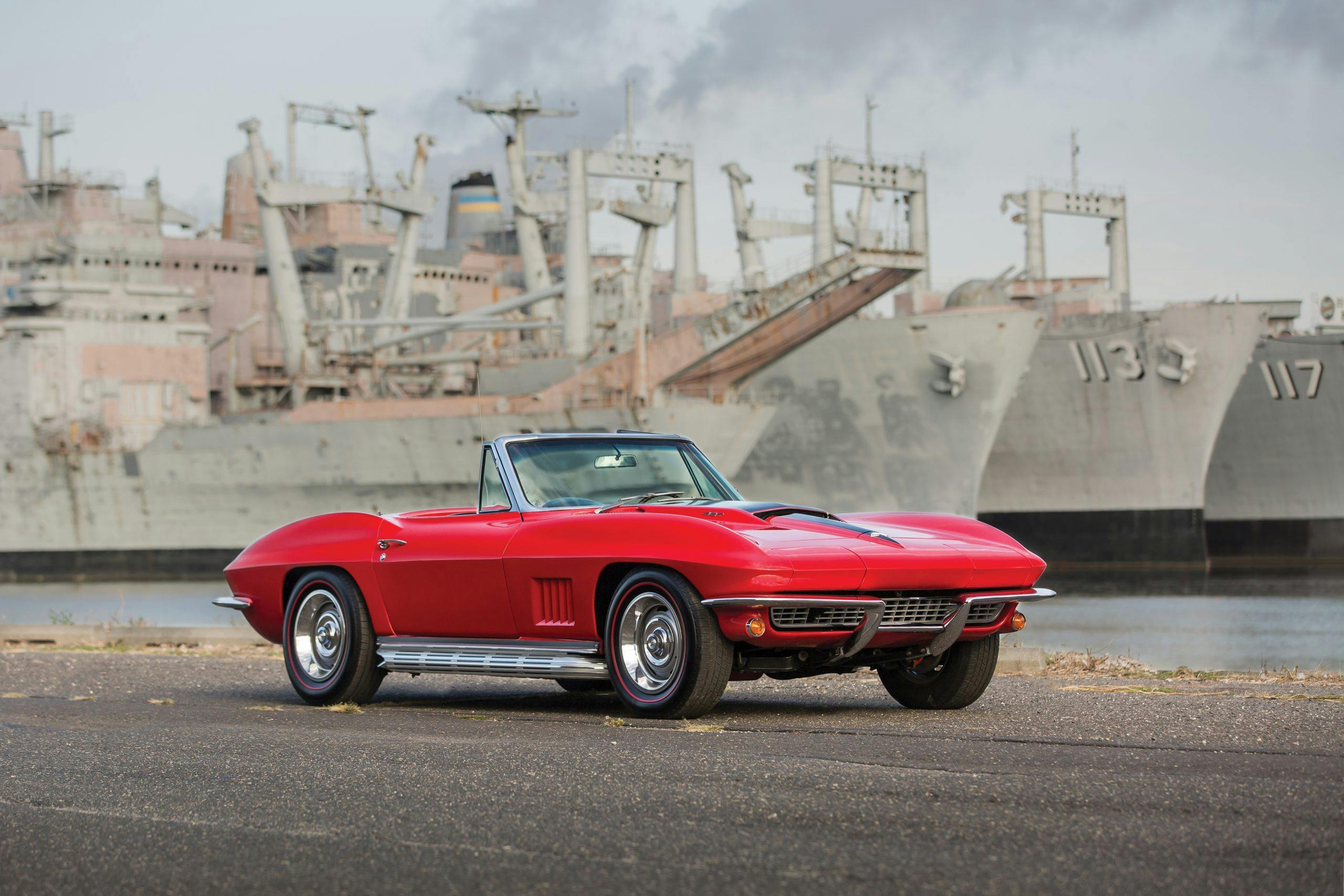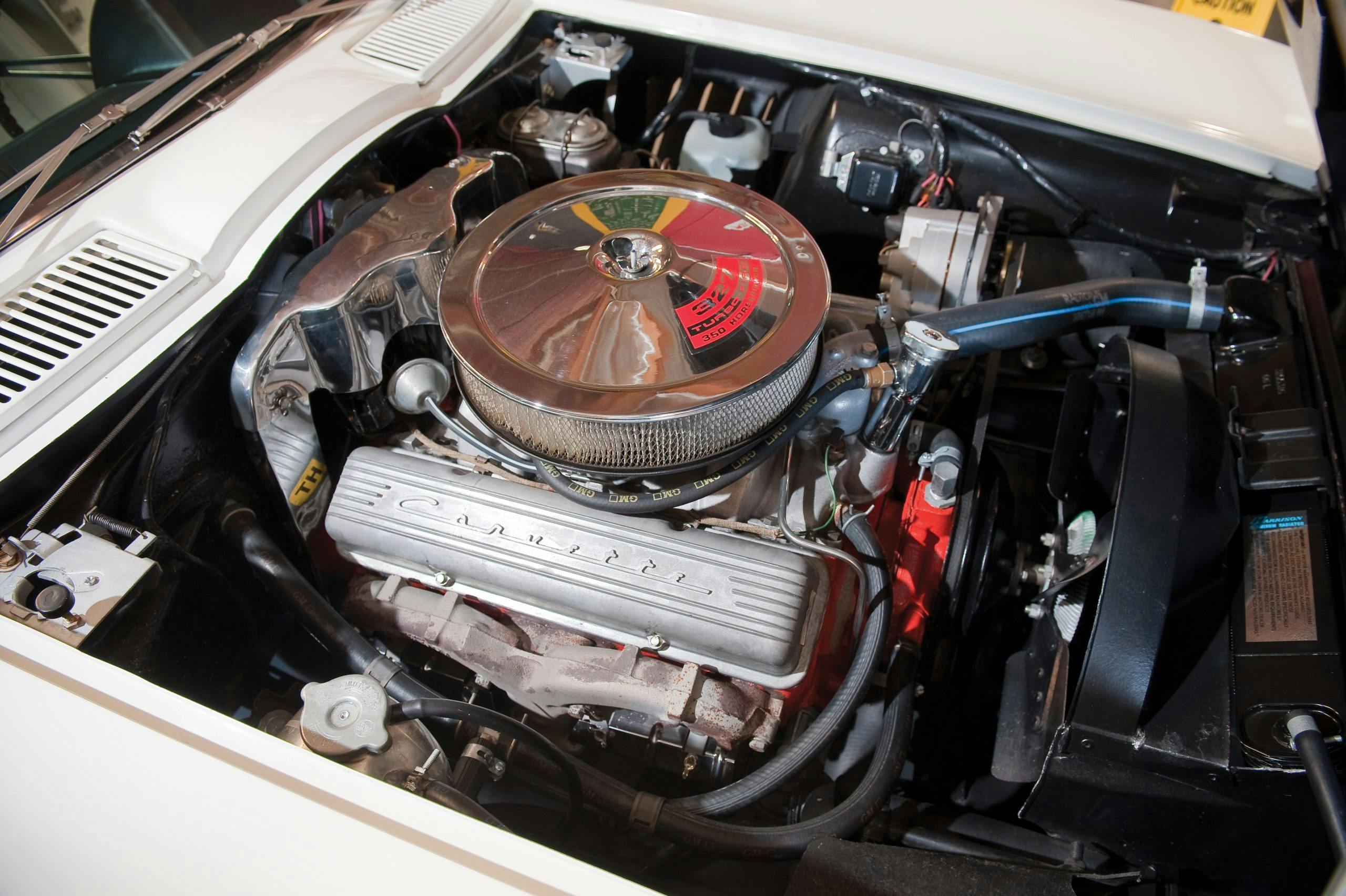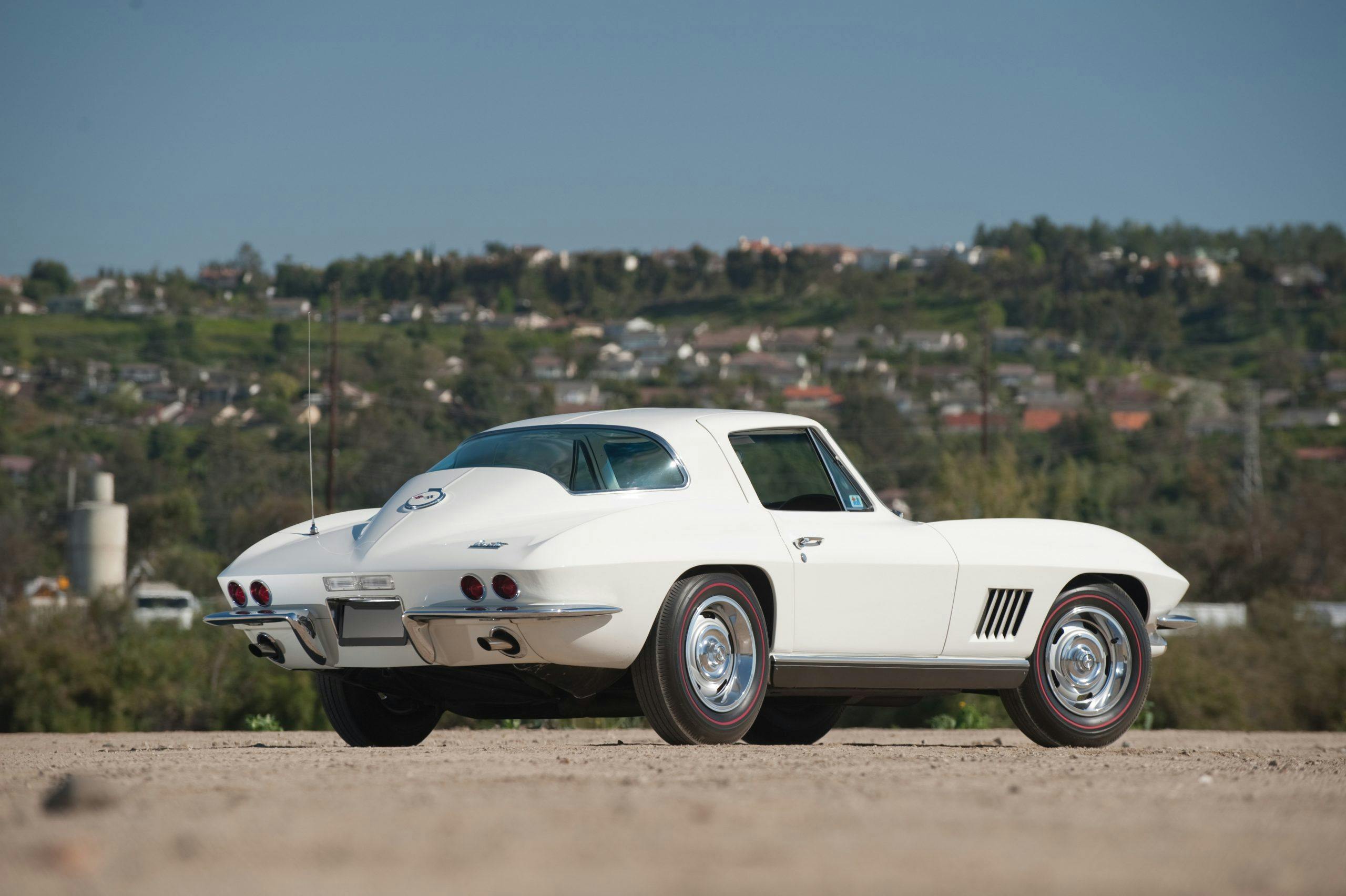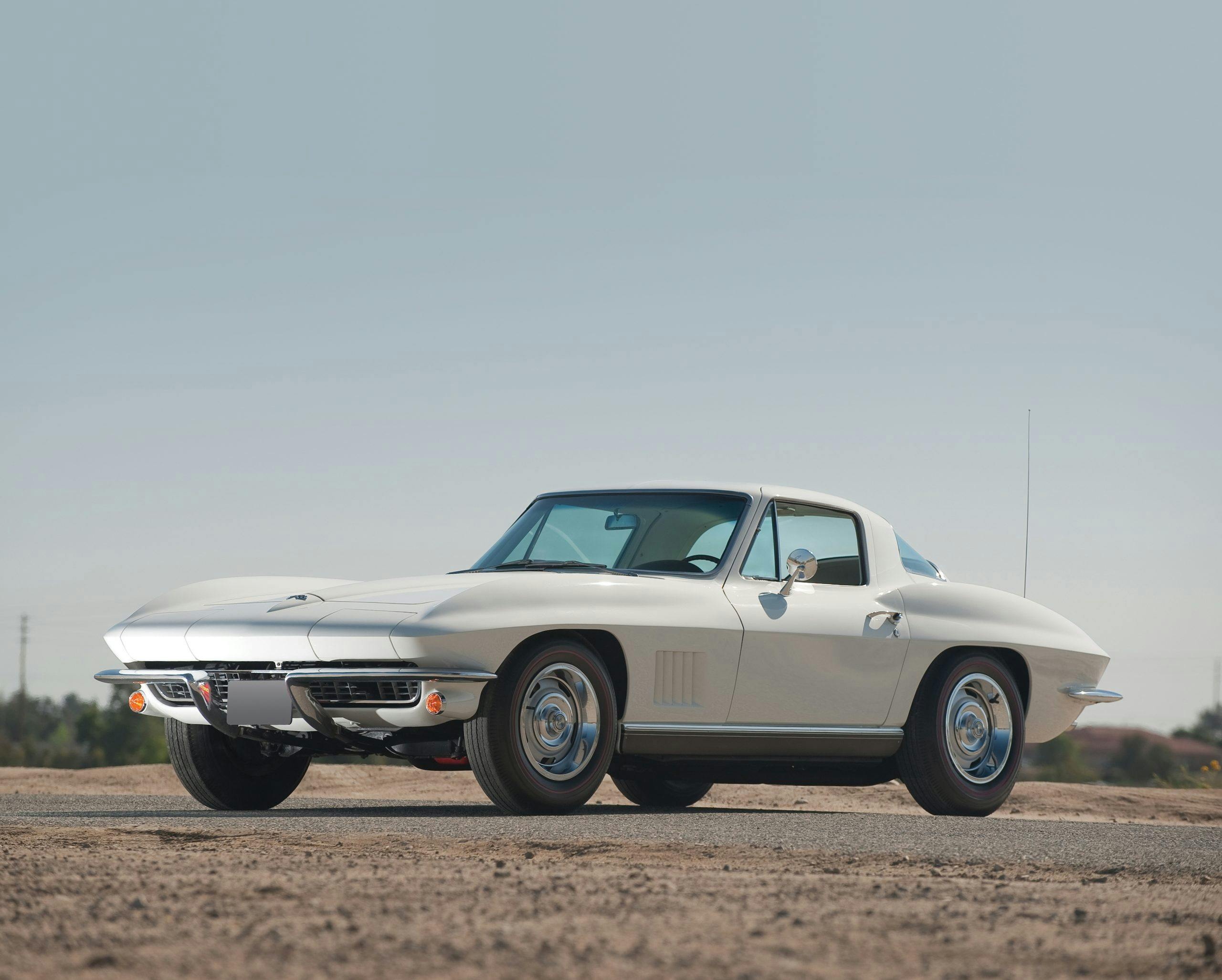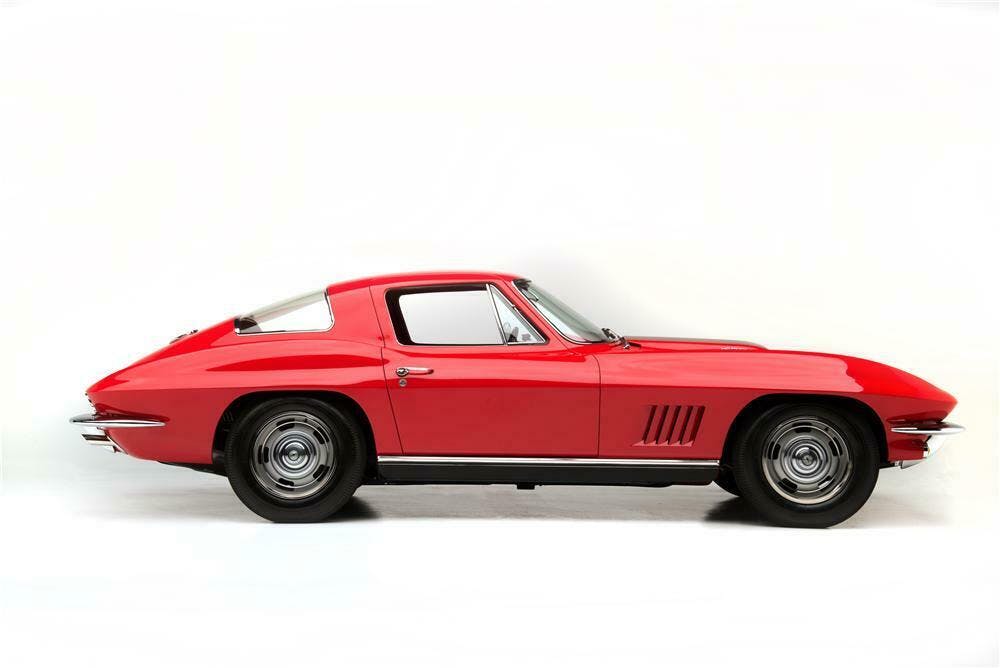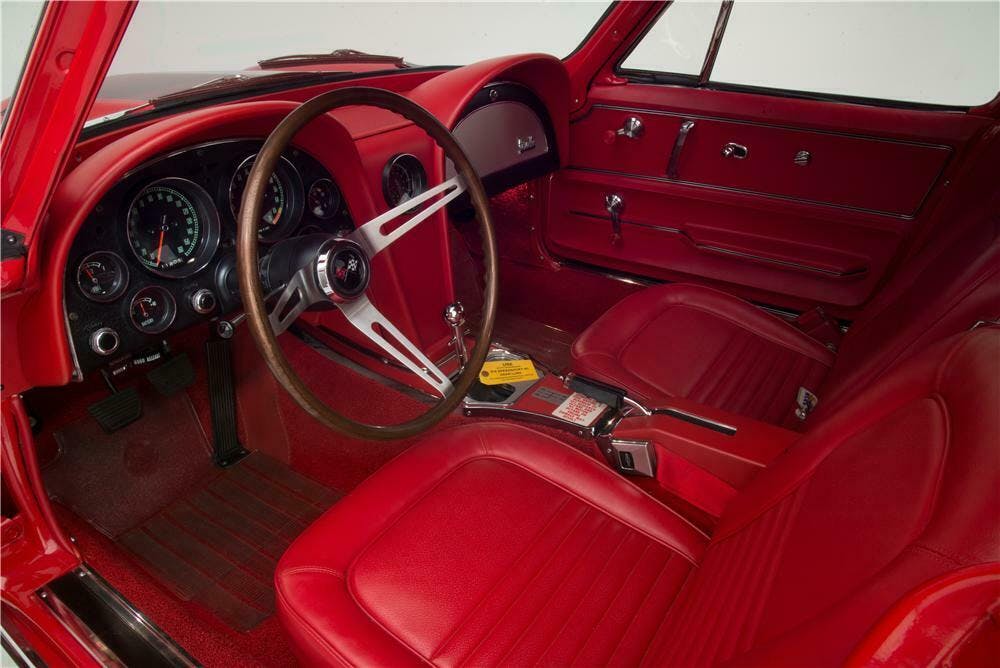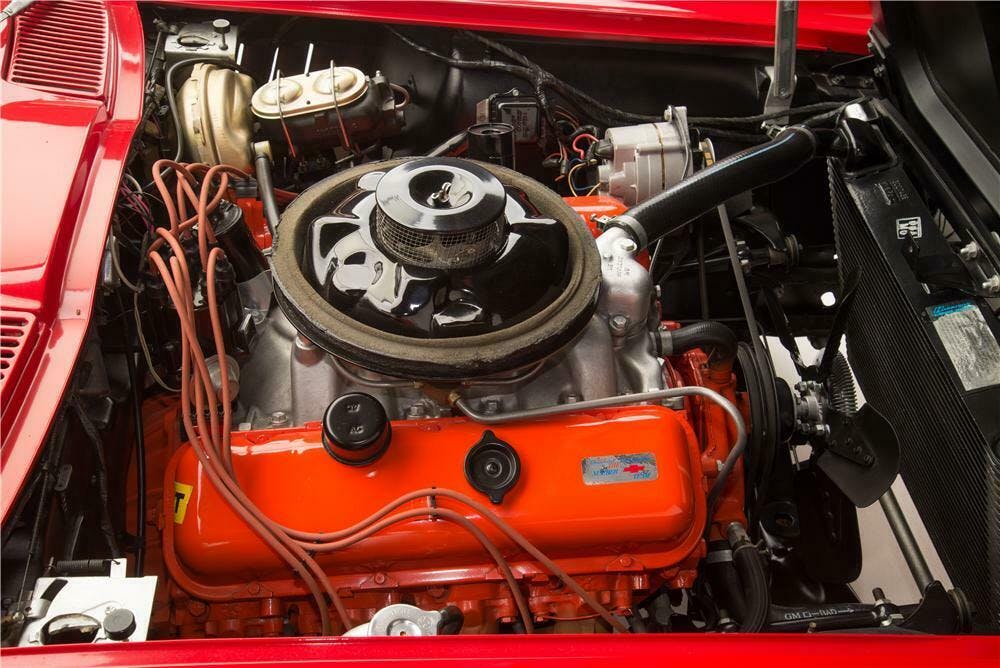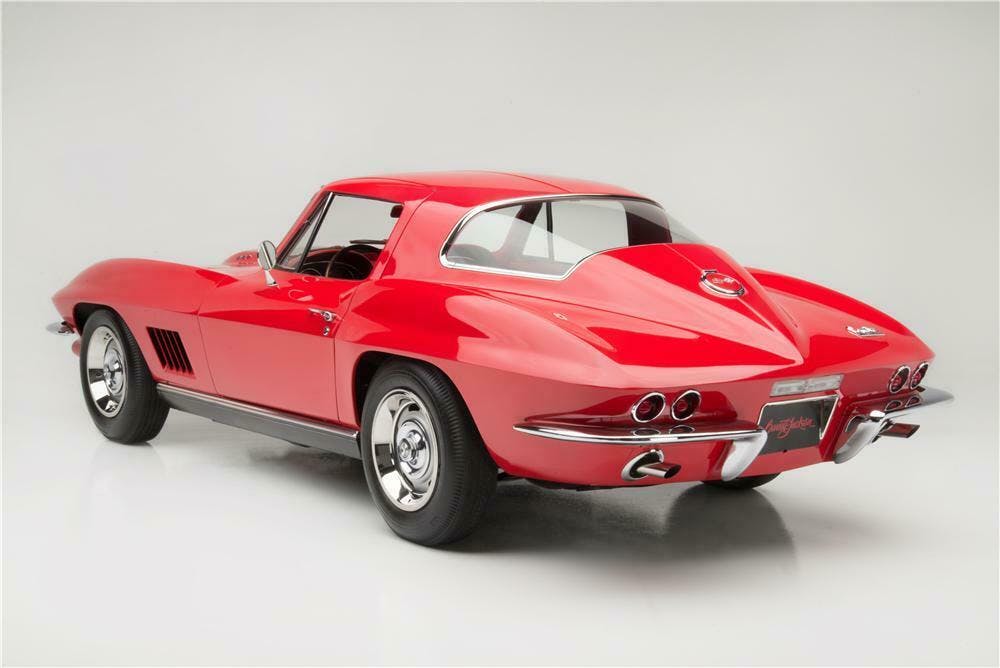1963–67 Corvette (C2) buyers guide
It’s an understatement to say the second-generation Chevrolet Corvette was a significant departure from the original “solid axle” Corvette. Sporting a fully-independent suspension and a chassis blueprint benefiting from years of racing experience from GM engineer Zora Arkus-Duntov, and with designer Bill Mitchell’s all-new fastback coupe body (convertibles were available) reminiscent of the stingray fish, the C2 set the standard in Corvette engineering for many years to come.
So let’s get a high-level overview of every year of the C2 (also called Mid-Years by many purists) and highlight special features so you’ll know which examples are best for you!
1963
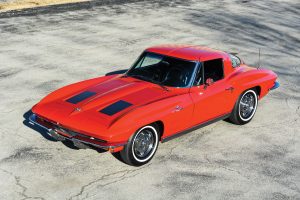
While so much of the C2 Corvette was new, it shared many of the advancements from the tail end of C1 production. This included all four small-block (327-cubic-inch) V-8 engines, producing 250/300/340 horsepower—and 360 horsepower when equipped with fuel injection. The standard three-speed manual, optional two-speed Powerglide automatic, and optional four-speed manual also carried over, while an optional close-ratio four-speed manual was available for the 340- and 360-hp engines.
Brakes were upgraded from the C1, as the 11-inch drums were wider for a larger contact patch, while optional sintered metallic brake shoes (J65) made for more aggressive braking. The coveted Z06 option took performance to a new level: an $1818 upgrade for owners wishing to race a Corvette in sanctioned racing events. Once the buyer ordered the fuel-injected V-8, four-speed manual, and positraction (limited slip) differential, the Z06 added a larger front sway bar, uprated springs and shocks, and a 36.5-gallon fuel tank for fewer pit stops in endurance racing.
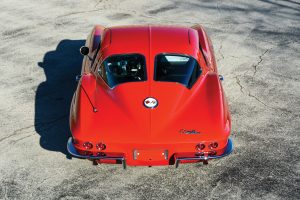
While the Z06 made waves on local race tracks, all 1963 Corvettes benefited from an improved interior: more ergonomic driving position, comfortable bucket seats with optional leather, and options like air conditioning, power windows, tinted glass, woodgrain effect steering wheel, and even an AM/FM radio. Power steering and brakes were also available for extra comfort behind the wheel.
And, as most enthusiasts know, 1963 was the only year for several unique design elements—most notably the split rear window, which was deemed too difficult to see out of for many drivers. The hood was also unique, with (sadly, non-functional) vents deemed unnecessary for future models. While these features make the 1963 highly prized in the collector car market, they also sold briskly (21,513 units) as both a coupe ($4257, 10,594 units) and convertible ($4037, 10,919 units) when new. This effectively cemented the Corvette’s status as America’s Sports Car.
1964
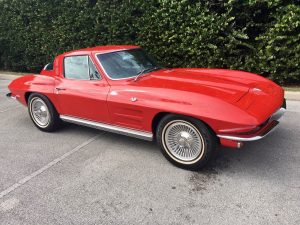
Aside from the adoption of a single rear window and a few small changes, the 1964 remained true to the first C2 Corvette. The hood retained the stylish “footprint” of which the fake grille vents were installed, the driver’s side B-pillar air vents were made functional, a cleaner rocker cover replaced 1963’s ribbed panel, and a restyled fuel filler door (concentric rings around the logo) graced the ’64 Corvette.
Interior changes included a new steering wheel with a (simulated) walnut rim, and new chrome interior door handles. Improvements were made to noise, vibration, and harshness levels with the addition of more sound insulation, revised body mounts and extra shifter linkage bushings. An optional, rear mounted, three-speed fan increased circulation for Corvettes, with or without air conditioning.
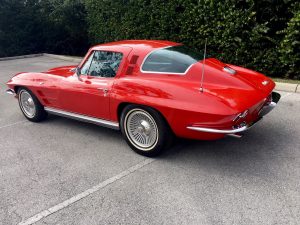
While the race-spec Z06 model was no longer available, many of features remained available as stand alone options, including the up-rated front and rear suspension, brake upgrades, and the massive fuel tank. A new transistorized ignition system was optional and provided more efficient performance even under extreme conditions. Wheel covers sported a cleaner design and new cast aluminum turbine wheels with knock off center caps were optional.
Powertrains remained the same aside from the top two engines: the carbureted 327 now had 365 horsepower, while the fuel-injected 327 had a robust 375 hp. Manual transmissions went from Borg Warner-sourced units to Muncie gearboxes. Like the previous year, the four-speed manual was the most popular choice for Corvette buyers. The improvements helped Chevrolet sell 22,229 units of both coupe ($4252/8304 units) and convertibles ($4037/13,925 units)
1965
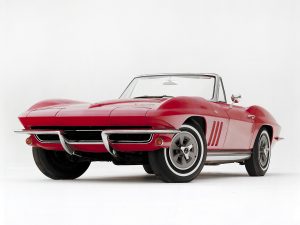
One of the most significant cosmetic changes for ’65 was a smooth hood that deleted the footprints of where the 1963 model had its grille inserts, and the addition of front fenders with functional cooling vents. A new grille greeted buyers, along with new wheel covers and rocker panel covers. The gas filler door now had a radial spoke design around the logo.
The interior received upgrades as well, most notably an optional steering wheel rim made of genuine teak. Standard upgrades include new door panels with integrated arm rests and retracting seat belt assemblies. Larger bucket seats also had more support, while parts of the center dashboard were now painted instead of upholstered in vinyl. Bigger changes lay underneath the 1965 Corvette.
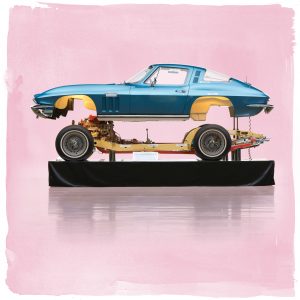
A standard four-wheel disc braking system was now standard, including four-piston front calipers and a redesigned master cylinder. Surprisingly the previous drum brake setup was still available, and netted the buyer a $64.50 credit.
While the fuel injected small-block motor was slowly phased out (771 were produced), there were five small-block V-8 engines (327 cubic inches, making 250/300/350/365/375 hp) and an all-new, range-topping 396c-cu-in big-block V-8 (L78) making a whopping 425 horsepower. Not only was the 396 big-block’s performance impressive, all examples came with a unique domed hood to clear the taller engine.
The C2 Corvette’s improvements racked up sales, as 23,564 units sold (15,378 convertible, 8186 coupe) for a base price of $4321 for the coupe and $4106 for the convertible.
1966
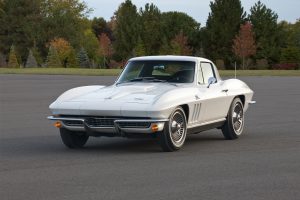
This year is most notable for the introduction of the coveted 427-cu-in big-block V-8, available in either (L36) 390 or (L72) 425 horsepower with an impressive 460 lb-ft of torque. While horsepower ratings might have been purposefully understated at the time, all big-block Corvettes came with a Positraction axle, firmer suspension, and four-speed manual transmission.
The big-block engine’s seemingly instant popularity meant the 327 small-block went down to two options, a L75 with 300 horsepower or an L79 with 350 horsepower. A new air-injection system helped lower exhaust emissions and was made for California owners only.
A new egg-crate grille greeted buyers while the C2’s trend of redesigning wheel covers and rocker panels continued. The B-pillar mounted vents were deleted. New “Corvette Sting Ray” emblems were added to the hood and rear deck, while the formerly optional reverse lights were now standard. The Off Road Exhaust System (N11) grew in popularity threefold over last year, while the side exit exhaust (N14, often associated with big-block C2 Corvettes) went up by 60%. The gas filler door now had a turbine-effect texture around the logo.
Interior changes were even more modest: a new seat cover design greeted occupants, chrome door pulls were added while headrests, four-way hazard flashers and shoulder belts were optional. And the results were hard to argue, because Chevrolet sold an impressive 27,720 units—17,762 convertibles at a $4084 base price and 9,958 coupes at $4295.
1967
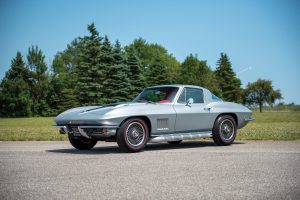
A cleaner look greeted buyers of the last year of the C2 Corvette, but even more performance lurked under the skin.
Hood and fender emblems were deleted while the fuel filler door was now a Corvette logo on a color-matched, distraction-free background. The fender’s side vent changed to a five-fin design. Rocker panel covers were flat and unadorned, a large backup lamp was now placed over the license plate, and wheel covers were replaced with standard Rally wheels with chrome beauty rings. The optional aluminum turbine wheels no longer sported garish knock-off hubs, instead hiding a conventional bolt pattern under a modest hub cap.
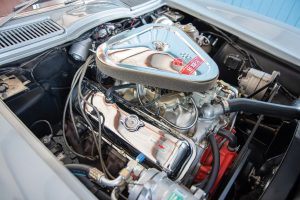
The big news was under the new-for-’67 stinger hood scoop for 427-cu-in big-block V-8 Corvettes: the 390-hp L36, 400-hp L68, 435-hp L71, and a L88 race engine with an underrated 430 horses. L71 engines could be ordered with aluminum heads (L89) for extra weight savings and performance. The standard 300-hp and optional 350-hp small-block V-8s remained.
Interior changes for 1967 were limited to new seat upholstery, redesigned control knobs, a relocated hand brake lever, and a new dashboard cowl that eliminated the passenger’s grab handle. Sales slipped slightly to 22,940 units (14,436 convertibles, 8504 coupes), with prices of $4388 for coupes and $4240 for convertibles.
While the C2 Corvette’s production run was relatively short, the vehicles made have won the hearts of classic car enthusiasts for their timeless design and impressive performance, no matter which powertrain is chosen. Let’s briefly discuss two unique and desirable examples of the breed:
1963 Corvette Grand Sport
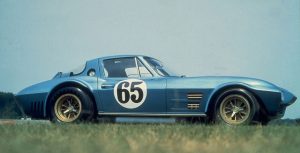
Zora Arkus-Duntov was not satisfied with the creation of the impressive Z06 package, instead wanting an even more race-friendly Corvette. Changes to a regular C2 were shocking and included: lightweight frame, lighter weight fiberglass body panels, unique front fascia with clear headlight covers instead of hideaway doors, massive hood gills, a rear fascia with round holes mimicking the quad taillights, fender flares, side pipes, a differential fluid cooler on the deck lid, and all manner of racing equipment needed for competition purposes. Five Grand Sports were made with a unique, aluminum small-block 377-cu-in V-8 before GM pulled the plug on Zora’s program. Sadly, a full 125 units were needed to satisfy homologation rules.
In turn, the Grand Sports were raced internally by privateers, who successfully battled Shelby’s Cobra supercar. General Motors replaced the bespoke small-block race engines with more conventional big-blocks before the Grand Sports were sold to private owners. While finding an original Grand Sport is beyond difficult, there are continuation replicas available that pay homage to this great machine.
1967 Corvette L88
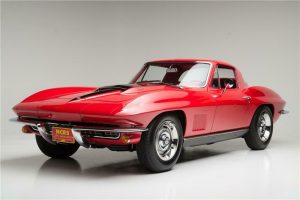
While not a dedicated race car like the Grand Sport, the L88 Corvette was clearly born from Zora Arkus-Duntov’s wish to put race-car performance in the hands of those wanting to put a Corvette on track. This wolf in sheep’s clothing was limited to 20 units, likely because Chevrolet discouraged would-be L88 buyers: the staggering 12.5:1 compression ratio big-block required 103 octane fuel.
And the L88 drank copious amounts of it, as it was intended for those seeking race-track domination. While advertised at 430 horsepower, most third-party estimates put the L88 at well over 500 horses. Mandatory options meant an L88 cost $1500 over the price of a base 1967 Corvette but lacked creature comforts like air conditioning, power steering, radio, and automatic choke. The L88 option soldiered on until 1969, making Zora Arkus-Duntov’s commitment to motorsports beyond clear to the motoring public.
